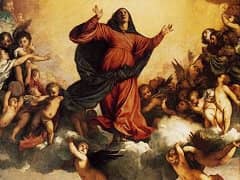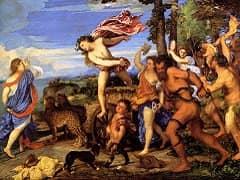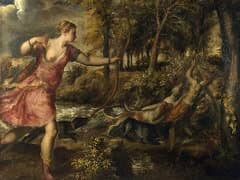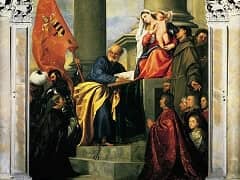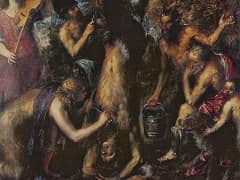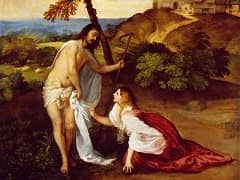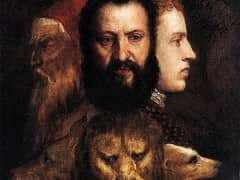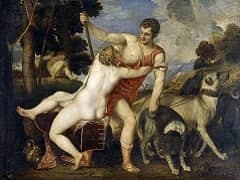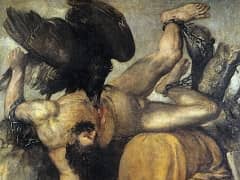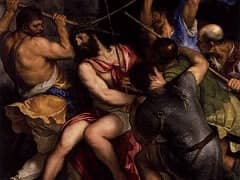Equestrian Portrait of Charles V, by Titian
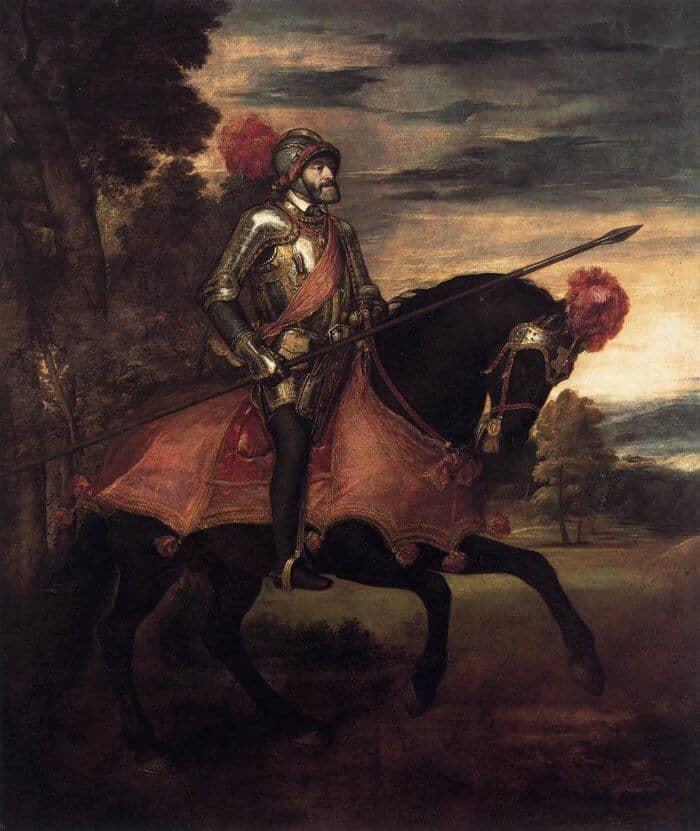
Equestrian Portrait of Charles V (also Emperor Charles V on Horseback and Charles V at Muhlberg) is an oil-on-canvas painting by the Italian Renaissance artist Titian. Created between April
and September 1548 while Titian was at the imperial court of Augsburg, it is a tribute to Charles V, Holy Roman Emperor, following his victory in the April 1547 Battle of Muhlberg against the
Protestant armies.
The portrait in part gains its impact by its directness and sense of contained power: the horse's strength seems just in check, and Charles' brilliantly shining armour and the painting's
deep reds are reminders of battle and heroism. Titian recorded all of the foreground elements - the horse, its caparison, and the rider's armour - from those used in the actual battle. Both
the armour and harness survive, and are kept at the Royal Armoury in Madrid.
The portrait was commissioned by Mary of Austria, Queen of Hungary, with Charles specifying how he wished to be presented. The emperor was very aware of the importance of portraiture in
determining how he was seen by others, and appreciated not only Titian's mastery as a painter, but also the artist's manner of presenting him as a ruler.
Titian came to know Charles V personally, and had painted a number of portraits of him by this time. A highly intelligent man, Titian was quick witted, humorous and easy company. He had
developed such a strong friendship with Charles by the time of this portrait that the emperor's courtiers were uneasy at the extent that a lowly painter was allowed into his confidence.
While in Augsburg, Titian was given an apartment close to Charles' own, and allowed easy access and frequent meetings with the emperor.
Titian creates a tension between the emperor's age and physical frailty, and his reputation as a forceful and determined, dynamic leader. This is most apparent in the fact that Titian
portrays Charles heroically, but places him in a calm dawn setting in which there are no signs of battle. Charles' frailty is underlined by the dark overhead clouds, his weary facial
expression and weak jaw (his lower jaw protrudes beyond the line of the upper part), though this is subverted so that it instead conveys his resolve. Charles further suffered from gout,
and in reality was carried to the battle in a litter. In the portrait, Titian achieves a feeling of steadiness and control through passages such as the darkly painted wood behind the rider,
the evenly clouded sky, and Charles' detached, yet steely, gaze into the distance. The sense of forward motion is suggested by the angle of the spear and charging horse as Charles and mount
arrive into the open landscape. The sky also resonates with Charles' victory, but as with the landscape, it also contains dark undertones. The skyscape is considered Titian's best, and has
been described as "flaming and shadowed, with gold light fighting with blue, deathly clouds set against a landscape which suggests the immensities of space that Charles dominates and the
brooding, inner landscape of the soul."

